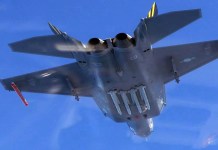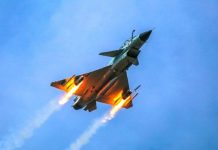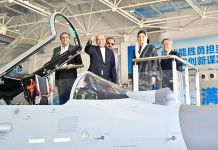Amid India-China tensions, experts have often compared Chinese J-20 stealth jets with Indian LCA Tejas. China recently started to mass-produce its J-20 jets while India is also betting big on indigenous Tejas. Both the jets, however, depend on foreign engines.
Rafale or F-35: Indian Rafale Jets ‘Equally Dangerous’ As US’ Stealth F-35 Aircraft
As per latest reports, China could be close to developing indigenous engines for its J-20B fighter jets. If Beijing succeeds in achieving this feat, it will join the likes of the US, Russia, France and EU which have mastered this technology.
Meanwhile, India is trying to achieve the same feat for its Tejas fighter jet but remains decades behind. The Kaveri engine for LCA Tejas has faced constant obstacles as the thrust to the weight ratio was found to below-required figure for Tejas jet. DRDO was eventually compelled to steer the Kaveri engine away from the LCA program, after an investment of almost 40 years.
On the contrary, China is aggressively working towards powering its J-20B jets by indigenous engines. The new engines fitted to the new J-20B could be an upgraded version of the indigenous Chinese WS-10 Taihang engines.

As reported by EurAsian Times earlier, the J-20B unveiled by China recently has formally entered into mass production. Although the current J-20Bs are propelled by Russian Saturn AL-31 engines, China aims to power its jets with domestic WS-15 engines.
The indigenously developed engine will also increase fuel efficiency and increase the current flying range of the J-20. Despite initially struggling to design and develop indigenous engines, Chinese engineers appear to have made remarkable progress.
Why India Went Running To Russia After The Deadly India-China Border Clash At Galwan Valley?
Chinese engineers have been developing high-thrust turbofan WS-15 engines for the J-20 and it is expected to be ready in the next few years. The eventual ambition is to equip the J-20B fighter jets with domestic engines.
As reported by Eurasian Times earlier, the Light Combat Aircraft (LCA) `Tejas’, is a 4.5 generation single-seat multirole fighter aircraft developed in India. The government of India intended to power the LCA Tejas will the indigenous ‘Kaveri’ engine, an idea which failed.
Indian vs Chinese Tanks: Why Mighty T-90 Tanks Have No Answer To Chinese Type-15 Lightweight Tanks?
The `Kaveri’ jet engine was being designed and developed by the Defence Research and Development Organisation (DRDO). Kaveri was a low bypass twin-spool turbofan jet engine which was slated to provide an 80 KN power pack and adequate ‘thrust to weight’ ratio required by a modern fighter jet configuration.
However, the thrust to the weight ratio of Kaveri was below the required figure for Tejas aircraft. Due to this, the DRDO was forced to power its jets with the General Electric GE F414-INS6 of the US.
Indian Navy To Acquire ‘Submarine Killer’ That Even China & Russia Dreads
In terms of ‘Aatmanirbhar Bharat’, the LCA Tejas in comparison to J-20s is decades behind from achieving complete indigenization. For now, the Kaveri engine is being justified for use in the UAVs.
While the government has made it a priority to produce indigenous defence equipment, in reality, India is still reliant on foreign countries to fulfil its defence needs while China is aggressively moving towards complete indigenization.




